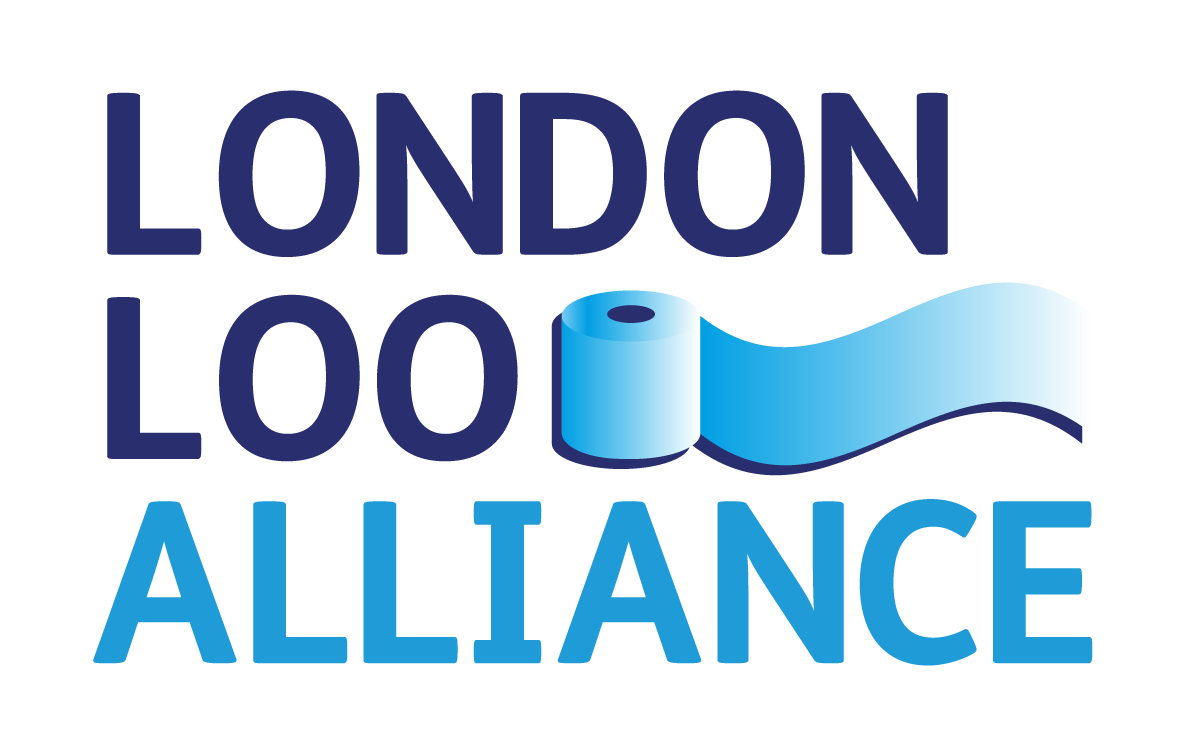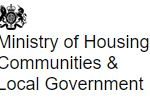Royal Society for Public Health (RSPH)
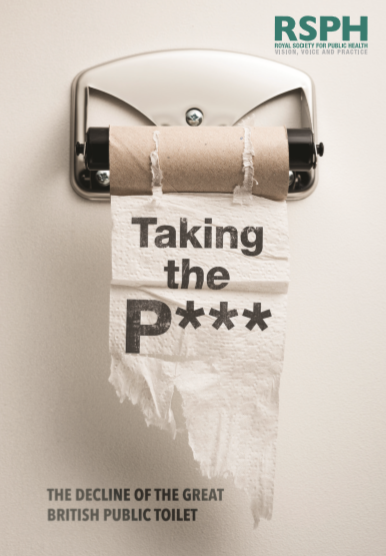
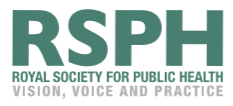
REPORT ON THE SERIOUS DECLINE OF PUBLIC TOILETS
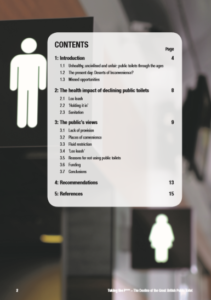

1: Introduction
1.1 Unhealthy, uncivilised and unfair: public toilets through the ages Provision of toilets outside the home dates back to ancient times, although the modern history of these facilities is from the late 19th century. Old-style toilets, often termed ‘nuisances’, drained directly into rivers or streets: these were removed from UK cities from the mid-19th century onwards. The problem for an increasingly mobile population was that such facilities, however unsatisfactory, were not usually replaced. The emphasis was on cleaning up the environment and there was little or no concern for the working classes lacking access to toilets. There was also an assumption that, with homes increasingly having toilets (albeit often outside or shared in poor communities), there would be natural progress in sanitation. The Great Exhibition of 1851 presented the public with flushable water closets that proved both popular and profitable, but a trial of the economic feasibility of public toilets by the Royal Society in 1852 made a large loss.
Nevertheless, the idea that public toilets could and should be profitable has persisted, associated with an implied assumption that these are optional luxuries, with no legislation requiring public toilets on the UK statute books. In a study of the heyday of public toilets at the turn of the last century, the most prominent block to provision was funding, as it is now.1 In the latter half of the 19th century a few public places, such as railway stations, installed toilets; but there were still no street facilities for women, and provision in workplaces was inconsistent – again with usually none for women. Prompted by lack of facilities and concerns about street urination, the 1880s onwards saw installation of public toilets in most UK cities, often with grand architectural design, celebrating the newly established improvements in plumbing and sewerage. Legislation was introduced for required provision in workplaces and schools, but not elsewhere.
Figure 1 – A former public toilet in Spitalfields, London, converted into a wine bar and put up for sale again in 2016 for £1 million.
During the first half of the 20th century, public toilets continued to increase in number, funded usually by local authorities (LAs). Some were free to use, but many required payment. The charge was one old penny until decimalisation of the currency in 1971, but usually there was a free cubicle for those without a penny to hand or to spare, a feature which has since disappeared.
In more recent decades the increasing pressure on LA budgets has led to the privatisation or closure of many public toilets. Sub-contracted or privately operated toilets make a charge, usually 50p or more. They tend to be located in highly frequented areas such as tourist spots and in general they have restricted opening hours. Legislation from the 1960’s banning turnstiles – on the basis that they are unfair to the disabled, as well as to those without money – has since been repealed to allow ‘pay to enter’ facilities. Where public toilets cannot be privatised, many have been sold off for other purposes or simply closed (Figure 1). Introduction of legislation to improve disabled access has had the unfortunate consequence in some cases of several public conveniences being replaced by just one disabled access toilet. On top of this, many of the required accessible toilets are not fit for purpose or are inconveniently located. Sporting venues are also poorly served, with particular problems for the disabled.
1.2 The present day:
Deserts of Inconvenience? According to a BBC report in 2016,3 local council cuts caused one in seven public toilets to be closed between 2010-13, the UK situation being described as “deserts of inconvenience” from “Wandsworth to Newcastle”. The report identified ten areas in England and Wales with no council-run public toilets at all. In a further BBC report in 2018,5 this loo absence had increased to 37 areas of the UK. This should come as no surprise given four out of five councils cut spending on public toilets between 2011 and 2016,3 a trend that shows no sign of reversing. While the few public toilets available do tend to be found more frequently in tourist areas, the shortage of ‘places to go’ for large groups has become a major concern for tourism, now a major income generator for the UK. Workers ‘on the move’, such as tourist guides, drivers of lorries or buses and postal workers, have often complained in vain of the lack of facilities.
Equality of access to toilets is an important factor, particularly for women who take longer and cannot use urinals. This leads to the long queues familiar in many public toilets (Figure 2). In a YouGov UK survey in 2017, 59% of women reported that they regularly queue for a toilet, compared with 11% of the men.7 Because of time consuming factors related to clothing, menstruation, and anatomical differences, a fair ratio of toilet provision would be at least 2:1 in favour of women. Calls to address this unfairness have led to ‘potty parity’ legislation in some US states and Canada,8 although not yet in the UK, where the British standard is still 1:1, despite a recommendation from the British Toilet Association for at least as many female cubicles as there are cubicles and urinals in male toilets.9 Equality of access includes the demands for ‘gender neutral’ toilets and the needs of transgender individuals.10
Local council cuts caused one in seven public toilets to be closed between 2010-13
In an age when previously shocking topics are readily discussed and aired in the media, there persists a reticence about either discussing public toilets or acknowledging the increasing problem of their absence. The most recent House of Commons public inquiry into toilets in 2008 referred to the taboo still surrounding the subject11 and this is further demonstrated by various euphemisms for these facilities, such as cloakrooms, rest rooms or conveniences. Low priority is given to planning and ensuring appropriate provision, and it is a great shame that the issue has been side-lined in this way. In fact, failure to provide public toilets has implications not just for sanitation and general convenience, but also for levels of social isolation and physical activity among certain groups, through restricting their ability to go outdoors.
UK public inquiries in this century have lamented the decline in public toilets,11,12 while coming up with few practical solutions, save for community toilet schemes, whereby local cafes and other establishments receive modest funding to allow people to use their toilets without having to buy anything. Such schemes are suitable mainly for individuals: while they undoubtedly add to the provision of facilities, they do not address the needs of groups, many of the disabled or most of the homeless.
Figure 2 – Women queuing at the Embankment public toilets, London These toilets were first erected in 1911 with the aim of reducing “nuisances committed in doorways and the public street”. There is now a charge for entry. Note no queue for the ‘Gents’ on the left side. Photo: R. Stanwell-Smith
[BBC, 2018] In 2010 there were 5,159 toilets run by major councils in the to 4,486 in 2018
1.3 Missed opportunities
While there have been some hard won improvements to policy and British Standards on toilets,13,14,15 Wales is the only part of the UK with a new Public Health Act requiring local authorities to publish a local toilets strategy for its area. The ‘Inconvenience Committee’ of professional tourist guides successfully campaigned for the large Unite Union to pass a demand for statutory provision of public toilets a decade ago, although this has yet to be acted upon.
A recommendation that all the new Crossrail stations in London should have accessible toilets has not yet been fulfilled, with the admission that some key points, such as the busy Bond Street station, will have no toilet facilities whatsoever. While in 2017 the Mayor of London announced that in the draft London plan, more public toilets will be provided for London’s diverse population,17 there has been no recent update on progress. The recent good news that some London stations will allow free access to the toilets within station precincts is welcome – but as yet there is no indication this will apply in all stations.
The international perspective on toilets focuses on the World Health Organisation’s goal of universal basic sanitation by 2030, and we must not forget that with most UK homes having at least one toilet, we are better off than many parts of the world. World Toilet Day (November 19th) is now a regular reminder of the 2.3 million people who lack access to a clean and safe toilet, an improvement on the 2.6 billion in this plight in 2010 but slow progress nonetheless. While the international priority therefore is directed to ensuring toilets within the home, in many regions people will only have access to public toilets in the foreseeable future, or no toilets at all. Even when most homes in the world have a toilet, there will still be a need for public facilities, just as there is in the UK.
Provision of toilets has been called “the barometer of civilisation” and the UK should continue to support the international efforts required – but also must address the current state of neglect for public toilets we see in this country today.
The Global Picture
2: The health impact of declining public toilets
2.1 Loo leash
Most of us need a public toilet occasionally, but this is a more urgent problem for those with medications or medical conditions causing increased frequency of the need for a toilet (such as diabetes, or bladder, bowel or prostate conditions). In addition to diagnosed conditions, advancing age increases the need, as does the requirement for nappy changing and young children who can’t wait. Knowledge of the lack of facilities nearby acts as a ‘loo leash’, deterring some from venturing far beyond their homes. It is deeply concerning that at a time when public health policy is to encourage outdoor exercise, partly to reduce obesity and also to keep our increasingly elderly population fit and engaged with the community, our declining public toilet provision is in fact encouraging more people to stay indoors.
2.2 ‘Holding it in’
Deliberate dehydration or ‘holding it in’ to reduce the need for a toilet is commonly practised by those who fear not being able to find a public loo, but this can seriously affect health and exacerbate existing medical problems such as cystitis (Figure 3). Water bottle refilling points have been installed in several places in the UK, but public toilets would provide an ideal location, with the advantage of frequent water flow to prevent stagnation and possible contamination, a problem that has rendered many old-style drinking fountains impossible to maintain hygienically.
2.3 Sanitation
The health impact of public toilet closures includes the problems of street urination and defecation. Bye-laws prohibiting public urination do not exist for over half the LA’s in the UK, and where they do they are rarely enforced. It is difficult to estimate the hygiene impact of this but it is insanitary to have contact with faeces or urine, the contamination not always being clearly visible. This is a particular risk to young children and wheelchair users. Add to this the lack of hand washing points, for people eating out of doors or when travelling, and you have the potential for contamination by pathogens causing individual illness or contributing to epidemics. In poor areas in the US, emergency installation of public toilets and washing facilities has been used to control outbreaks of dysentery and hepatitis, such as on Skid Row in Los Angeles.
Figure 3 – Health effects of deliberate dehydration
Health effects of deliberate dehydration
Weakness, dizziness, reduced physical performance, reduced short-term memory and other cognitive performance, depressed mood, less alert
constipation, cystitis, increased risk of renal stones and headache
3: The public’s views
In September 2018 a questionnaire survey was conducted for RSPH on what the public think about the decline in toilets, as well as ideas for how toilets could be funded, health implications, and access implications for women. Conducted by Populus, the survey included 2,089 UK adults aged 18 or over, with a standardised data base to represent factors such as income, gender, age and region.
3.1 Lack of provision
Given the rate of closures, it is unsurprising that 74% of people reported that there are not enough public toilets, with an increasing proportion by age
(Figure 4). There was some overall regional variation, with a range of 65% (E Midlands) to 82% in Wales and NW England. For those who need a toilet frequently due to illness or other condition (19% in this survey), the percentage reporting not enough public toilets was 85%. Regarding location of toilets, over 60% reported that there are insufficient public toilets in parks, although this figure was above 30% for other places, such as tourist areas and shopping centres (Figure 5). The majority of women and men in the survey (84% and 69% respectively) agreed there should be greater provision of toilets for women, although only 25% of the women and 30% of the men thought that toilets should be unisex to reduce queues. For the latter question there was an inverse relationship with age, with 38% of younger people (18-24 years) favouring the unisex toilet option, compared with 26% of those aged 65 years or more.
• Three in four (74%) of the public say that there are not enough toilets in their area
• One in five (20%) don’t feel able to go out as often as they like
• More than half of us (56%) restrict our fluid intake before going out to reduce the need to find a toilet
Not enough public toilets?
% by age group 100 80 60 40 20 0 18-24yrs 35-34yrs 35-44yrs 45-54yrs 55-64yrs 65yrs
Figure 4 – Percentage of responders by age who stated there are not enough public toilets
3.2: Places of convenience
When people in the survey could not find a public toilet, supermarkets were a popular option (70%), followed by cafés or restaurants (63%). A smaller proportion resorted to pubs, petrol stations and betting shops, but of greater concern was the 16% who use a back alley or bush, this percentage being higher for men and for those with a frequent need for a toilet (Figure 6). Seventy-one percent of women reported that they never did this, compared with 41% of the men. Nearly a third of all areas combined (29%) reported that street urination was a problem in their town; 45% reported this for the London area.
Where do we need more public toilets?
% survey
% respondents
0 10 20 30 40 50 60 70
MEN WOMEN
Figure 5 – ‘No’ responses to question about whether there are enough public toilets in particular locations.
Figure 6 – Percentage of men and women reporting use of a back alley or bush when no public toilet is available
Residential areas Tourist areas Shopping centres Bus stations Tube stations Railway stations Parks
80 70 60 50 40 30 20 10 0
Never Ever Several times/yr
% respondents 0 20 40 60 80
Figure 7 – Reasons given for not using a public toilet, by gender
Concerns re safety
Concerns re drug use
Cost of entry
Lack of loo paper
Smell bad
Often unclean
Women Men
% respondents
3.3: Fluid
Over half the public restrict fluid intake in case they can’t find a toilet. Fifty-six percent of survey respondents reported restricting fluid intake either occasionally or frequently, due to concern that they might not find a toilet. Eleven percent reported that they restricted fluids more than once a week, rising to 13% among women compared to 9% of men. The highest proportion by social grade was in the semi skilled/unskilled group, with 15% reporting that they had to do this regularly.
3.4: ‘Loo leash’
The term ‘loo leash,’ sometimes also called a ‘urinary leash,’ refers to being unable to stray far from home, in case no toilet can be found. Two in five (42%) respondents reported that they have restricted outings on this basis, including 4% who have to do this more than once a week.
Strikingly, one in five of the general public agreed that they are ‘not able to go out as often as [they] would like because of concerns around a lack of public toilets.’ For those with an illness or condition requiring more frequent toilet use, this figure rose to above two in five (43%). Altogether these are alarming statistics with regard to health impact, and not insignificant obstacles to wider attempts to curb obesity, increase fitness and reduce health inequalities.
3.5: Reasons for not using public toilets
Some public toilets are excellent, well maintained and with an attendant on duty. Sadly this is not always the case and reasons given for not using a public toilet included lack of cleanliness, bad smell or lack of toilet paper, cited more frequently by women. There were also concerns about safety, drug use and cost
(Figure 7). restriction
3.6: Funding
The running costs of public toilets, according to local authority and other reports, vary between around £15,000 and £60,000 a year, depending on factors such as size and staffing by attendants. In the survey we attempted to tease out some viable options for funding, given the majority response that there should be a lot more public toilets.
Despite the consensus about need, few want to pay for them from their own pockets. For example, 85% agreed that councils (LAs) should have “a legal responsibility to provide public toilets which are free to use for the public”, but only 34% agreed that this should be via raising council tax. Such a proposal would also be unworkable without significant changes to the funding environment, following years of central government cuts to local authority budgets.
Between 2010 and 2020, councils will have lost almost 60p out of every £1 the Government had provided for services [LGA, 2019]. Unsurprisingly, the least popular option for funding public toilets was by entry fees (30%), but none of the offered options proved universally popular, with the exception of advertising in toilets (78%).
Business or charity sponsorship (62%), a generous benefactor (60%) and state funding in tourist areas (67%) were favoured. While benefactors do occasionally come forward, for instance for the toilets in Bridport, Dorset, funded by a local business woman, this is not a sustainable funding model at scale. Nevertheless, given the shortage of national or LA funds for these ‘necessaries’, it may be possible to offer tax breaks or gift aiding schemes to encourage both companies and individuals to sponsor local public toilets schemes.
The idea of taking a penny from the price of a bus, train or tube ticket was favoured by 45% of the public, while a tax on cafés and bars had the support of just over half (51%). State funding of toilets in tourist areas is not a new idea and local funding of this type is used in other countries, such as the USA.
3.7: Conclusions
Public toilets should be considered as essential as streetlights, roads and waste collection, and equally well enforced by legislation and regulations. This is important for all countries: the huge task of improving global sanitation should not eclipse the need for public toilets. The lack of provision is affecting equality, mobility, physical fitness and other aspects of health. However, our survey also demonstrated a central problem – no one wants to pay for them. It is high time to consider potential solutions.
4: Recommendations
I. The Government to make the provision of public toilets compulsory on a well planned and regulated basis. The time is right to deal with the astonishing lack of legal action on public toilets provision, as a matter of urgency – and for all those for whom urgency of need has not been addressed. This could be done through minor amendments to existing ‘permissary’ legislation, for example the most recent Public Health Act (1936). Where cities such as London have included public toilets in their plans, it may be possible to offer help and publicity to ensure that these are followed through without further delays.
II. Potty Parity Alongside this, ‘potty parity’ laws (as exemplified in the US, Canada and elsewhere [NY Times, 2005]) should be emulated in the UK to ensure fair provision in all areas. Equality of access to toilets includes the need for more unisex facilities, more toilets for women, and taking into account the needs of transgender individuals.
III. The Government to reverse years of funding cuts to local authorities and invest in our civic infrastructure.
A crucial prerequisite for the introduction of such statutory requirements regarding public toilets is the adequate resourcing of local authorities by central government. Councils are undergoing a financial crisis as a result of years of chronic under-funding: analysis by the Local Government Association shows that local services will face a funding gap of £3.9 billion by 2019/2020, rising to £7.8 billion by 2024/25 [LGA, 2019]. A proper funding settlement for local authorities is vital for ensuring adequate levels of public toilets provision, as well as positively influencing many other upstream determinants of health. The Government should use the forthcoming Spending Review to reverse years of shortsighted funding cuts, and properly resource local authorities.
Council Passes a Bill to Shorten the Line at the Ladies’ Room, New York Times Nicholas Confessore, May 26, 2005, accessible https://www.nytimes.com/2005/05/26/nyregion/council-passes-a-bill-to-shorten-the-line-at-the-ladies-room.html
IV. National and local government to pilot innovative new ways of financing public toilets, including a “spend a penny” campaign.
Recognising that public inquiries have failed to identify public toilets as a state or local funding priority, other ways to raise money to pay for toilets should be urgently considered, such as: • ‘Spend a penny’ levies on travel – a one-penny drawn from the price of every train and bus ticket to finance public toilets in the local area. This approach could be tailored to different regions, but as a rough indication of what it could finance in the capital, taking a penny on every London bus and tube journey corresponds to nearly 700 fully funded facilities – more than 20 new public toilets for every borough. • Donations on purchases, building on the success of this tactic by some charities and the successful introduction of a charge for plastic bags. • Sponsored activities and events. • Tax breaks for major donations to build or sustain a public toilet. • More advertising and optional purchases within public toilets or nearby.
V. Break down the toilet taboo
The taboo in discussing the serious aspects of toilet provision should be tackled by raising the profile of the subject, for example: • A conference in collaboration with charities that have sought to publicise the ‘toilet problem’. • Inclusion of the issue in fund raising events such as Red Nose Day and sponsored activities for charity, with emphasis on the health and social impact of the lack of provision. • An architectural competition to design the best public toilet in the UK – a ‘convenience’ suitable for our times – which could also serve as a tourist attraction. • A competition to find the best toilet jokes or limericks, to be publicised along with the lack of public toilets. The toilet taboo has led to a lack of public debate on the importance of this population health issue, and the way it disproportionately disadvantages certain groups, such as older people, women, and those with existing health conditions. Public health organisations have a responsibility to ensure the health effects of declining provision are publicised more widely, and that public toilets are recognised for their potential role in assisting hygiene, hydration, mobility and exercise. • All strategies and reports on obesity or physical activity to include reference to or recommendations on the levels of public toilet provision in parks and public areas. • Health aspects of deliberate dehydration or inadequate provision for those with greater need should be highlighted in reports on health and disability.
1. Stanwell-Smith R. Necessary nuisances: public health and the public toilet in London 1890-1910. Dissertation for the Diploma in the History of Medicine, Worshipful Society of Apothecaries, June 2011. 2. Photo Clarke & Lloyds property consultants – sourced from https://www.standard.co.uk/news/london/ money-down-the-drain-expublic-toilet-on-sale-for1-million-in-spitalfields-a3158681.html (accessed 02.05.2019) 3. BBC news online. Public toilets ‘wiped out in parts of UK’. Online: https://www.bbc.co.uk/news/uk36405414 4. Frizzell N. UK Councils are selling off public toilets. We need a loo coup. The Guardian, Thursday 6 June 2016. available at https://www.theguardian.com/ commentisfree/2016/jun/02/councils-selling-publictoilets-loo-coup (20.05.19) 5. Jones L, Schraer R. BBC Reality check: public toilets mapped. 15 August 2018. Online: https://www.bbc. co.uk/news/uk-45009337 6. Truckers’ Toilets UK. Newsletter for lorry drivers produced by Gillian Kemp. www.facebook.com/ TTUKcampaign 7. Smith M. Potty parity: would it be fairer to make women’s toilets bigger? [YouGov survey December 2017]. https://yougov.co.uk/news/2018/03/20/pottyparity-would-it-be-fairer-make-womens-toilet/ 8. Anthony KH, Dufresne M. Potty parity in perspective: gender and family issues in planning and designing public rest rooms. Journal of Planning Literature 2007; 21(3): 267-294 https://yougov.co.uk/topics/ politics/articles-reports/2018/03/20/potty-paritywould-it-be-fairer-make-womens-toilet 9. Ratio of male to female toilets, 2012. https://www. northernarchitecture.us/sport-architecture/ratio-ofmale-to-female-toilets.html 10. Davis AK. The hidden privilege in ‘Potty Politics’. American Sociological Association 2017 https://journals.sagepub.com/ doi/10.1177/1536504217732051?icid=int.sjabstract.similar-articles.3
11. House of Commons Communities and Local Government Committee. The provision of public toilets. London: The Stationery Office Ltd. October 2008 https://publications.parliament.uk/pa/ cm200708/cmselect/cmcomloc/636/636.pdf 12. Greater London Authority. An urgent need: The state of London’s public toilets. The London Assembly Health and Public Services Committee, March 2006. No longer available online, see Update Report July 2011. http://www.btaloos.co.uk/wp-content/ uploads/2014/01/FINAL_HPS_public_toilets_update_ report.pdf 13. Greed C. Inclusive urban design: public toilets. 2003. Oxford: Architectural Press. 14. Barkley M, Greed C. British standards revisions: more toilets for women and better toilets for all. Bathroom Today 2006; 2:42-43 15. Greed C. Overcoming the factors inhibiting the mainstreaming of gender into spatial planning policy in the United Kingdom. Urban Studies 2005; 42(4): 719-49 16. Cunningham S. Public In-conveniences. A practical guide to improving standards. Update September 2018. Online: http://www.publicinconveniences.org. uk/authors-comments/ 17. 17th Mayor’s Report to the Assembly. December 2017, pp26-27. Online: https://www.london.gov.uk/ sites/default/files/17th_mayors_reportv2.pdf 18: NHS Inform, Symptoms of dehydration, available at https://www.nhsinform.scot/illnesses-andconditions/nutritional/dehydration#symptoms-ofdehydration (accessed 20.05.19)” 19: Water, Hydration, and Health, Barry M. Popkin, Kristen E. D’Anci, Irwin, H. Rosenberg; Nutr Rev. 2010 Aug; 68(8): 439–458 20. CBS news report 2017. Online: https://losangeles. cbslocal.com/2017/10/18/portable-restroomshepatitis-a-outbreak/ accessed 20.05.19 21. Approximation based on the upper estimate of facilities running costs of £60,000 per year, and TFL data on journeys per year (accessible at https:// www.london.gov.uk/sites/default/files/bus_network_ report_final.pdf and https://tfl.gov.uk/corporate/ about-tfl/what-we-do/london-underground)
5: References
This report was lead-authored by Dr Rosalind Stanwell-Smith, trustee of the Royal Society for Public Health and Honorary Senior Lecturer at the Centre for History in Public Health, London School of Hygiene and Tropical Medicine.
The Royal Society for Public Health
John Snow House,
59 Mansell Street,
London, E1 8AN
www.rsph.org.uk
May 2019
For more information, please contact Toby Green – tgreen@rsph.org.uk
© RSPH 2019 Charity Registration Number 1125949
Twitter: @R_S_P_H Facebook: Royal Society for Public Health LinkedIn: Royal Society for Public Health















